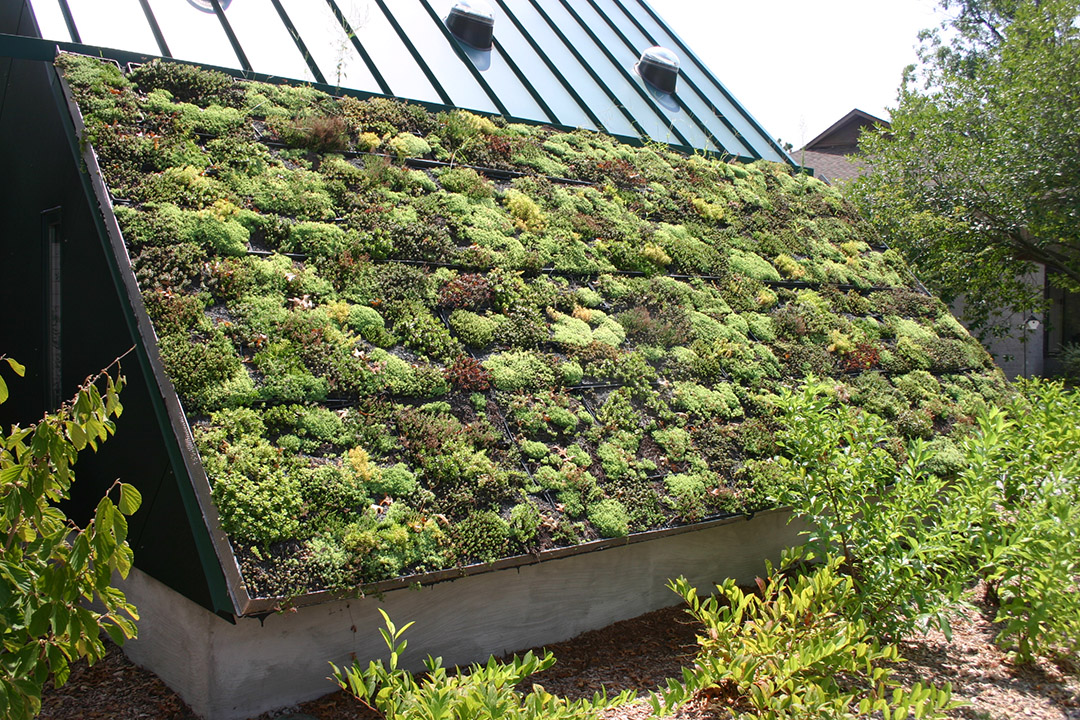Toronto is one of many large cities currently experiencing high rates of urbanization as a result of its increasing population. Thus, the city needs to be working on projects that strive to reduce the detrimental impacts that the climate crisis will have on residents and their quality of life. There needs to be initiatives in place that anticipate increased catastrophic effects on the climate from overpopulation and urbanization, and this forward-thinking needs to be applied toward constructive research and work.
A recent initiative tackling these issues has been launched by the Green Roof Innovation Testing Laboratory (GRIT) Lab in the John H. Daniels Faculty of Architecture, Landscape, and Design at the University of Toronto. The lab’s mission is to test the efficiency and environmental benefits of green architectural features, such as solar cells or ‘green’ roofs covered in vegetation. Architectural features with vegetation are often called living architecture.
The GRIT lab’s new initiative, the Design of Living Infrastructure for Ecosystem Services Network (DLIFES), will engage over 50 undergraduate and graduate students to tackle challenges in the design, construction, and management of sustainable city architecture. By improving existing technologies, the initiative’s founders hope to address larger problems like air pollution and flood prevention in large cities.
DLIFES is supported by a coveted funding scheme called the Collaborative Research and Training Experience Program Grant from the Natural Sciences and Engineering Research Council of Canada. According to the grant’s website, it is awarded to initiatives that are investing in solutions for relevant scientific issues throughout the country and assisting the development of “highly qualified students and postdoctoral fellows” into the workforce.
Bringing students together
The DLIFES project established its reach through partnerships with other universities, both within Canada and abroad. The Canadian universities include Ryerson University, Saint Mary’s University in Halifax, and the University of Saskatchewan, while the network’s international partners are found in Australia, Japan, Israel, France, and the United States.
“We realized… that living infrastructure requires an interdisciplinary team,” Jennifer Drake, one of the initiative’s founders and an associate professor in the Department of Civil & Mineral Engineering, said in an interview with The Varsity. “You need to understand soil science; you need to understand civil engineering design; you need to understand people and place in space.”
Participating students represent all these backgrounds and include all levels of education — from undergraduates to postdoctoral researchers — in hands-on, research-based learning experiences. Drake identifies this as a key highlight in a university system that separates students into specific departments and constrains their interactions with peers from the very disciplines they will interact with in a professional setting.
“What we’re hoping to achieve from this is a generation, if you will, of career-ready graduates who understand the assets that people with different training bring to a group, and [who] can work more effectively and more productively in interdisciplinary teams,” she added.
A larger vision
COVID-19 has slowed down the pace of work, but Drake hopes that in-person activities will resume over the summer. And once international travel is easier, she also hopes that students will be able to travel to partner institutions. Travel, she said, is useful for a project like DLIFES because working in different environments will expose students to the conditions that hinder or help living architecture vary from location to location, and will thus give them the opportunity to create different designs.
The larger goal of the DLIFES initiative is to improve city-wide sustainability. For example, this summer, the researchers hope to test whether stormwater can be collected and used for irrigation. Another group of students are looking at urban agriculture, including how it can decrease food instability. In this way, the project also hopes to make architecture more productive and beneficial for the economy.
“Hopefully there’s going to be a lot of new things that come out of this… that, in a whole, help Canadian cities be more livable and more resilient,” Drake said.


